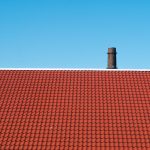
Lesson Three: Windows, Ventilation, Condensation
What do I need to know about windows?
A window is something you look through to allow light in, and the first step in understanding window systems is understanding how to heat your house – how to reduce energy loss and keep the heat inside. In New Zealand windows are too often used for ventilation which, sure it works, but it’s not great for the days that are cold and wet – hence a proper ventilation system is required.
We should all be pros on heating (if not, refer to Lesson One: Heating) but regardless of knowing how to heat your house, if your home isn’t fit with quality windows your home will be experiencing excess energy loss (aka heat loss).
If I have low quality windows and joinery – are thermal curtains my answer?
Thermal curtains are a popular selection however, they are a solution to a problem that shouldn’t exist. Firstly, you can’t see through them (like you can windows) and you’ll soon see that condensation will find its home on the windows – if it hasn’t already. The concept of thermal curtains is they add insulation to the area (window) which helps keeps you warmer. The curtain protects the warm air from inside your home getting to the cold window, so you feel warmer inside as you are somewhat protected from the coldness of the window.
The kicker here is that the air between the window and the curtain is much colder than the air on the other side of the curtain (because the curtain is doing its job in keeping the warm air inside the house). This means when the warmer, moist air travels around the curtain (you can’t stop all air from finding an escape route) it hits the cold surfaces in there and turns into condensation.
In short – yes, thermal curtains work by keeping you warm inside but get your squeegee mop ready for the torrents of water that will appear on your windows.
Single vs double glazed?
If you had the choice over single- or double-glazed doughnuts – you’d choose double, right? This might also be your preference with windows, however double glazing may not be the solution either. Double glazed windows won’t solve your problems unless you also invest in high quality (thermally broken) window joinery.
Obviously, replacing windows and window joinery is not always an option, it’s costly and if you don’t own the property yourself it is highly unlikely that your landlord will campaign this upgrade. A less durable and more temporary solution is to install a window film – a thin piece of plastic that is taped around the joinery which creates another layer in front of the glass – essentially a double-glazed window system!?
These films can be purchased from your local hardware store like Bunnings. And doughnuts can be purchased from Doe Doughnuts(thank me later).
What is the best quality joinery option?
The three main joinery options are timber, aluminum and vinyl.
Everyone loves timber because aesthetically it’s pretty, but it is also the most expensive option of the three and requires ongoing maintenance.
Aluminum is durable, but it’s also one of the most thermally conductive materials (allows heat to pass through). It is a good joinery option provided it has a thermal break. This sounds fancy, but it is just a piece of plastic between the outside and inside of the joinery which substantially reduces the amount of heat that passes through. Including a thermal break shouldn’t be any more expensive than standard aluminum joinery and the more people that adopt this method the more cost effective it will be.
uPVC is very commonly used in Canada – it is cheaper, more thermally efficient, easy to install, and the newer uPVC has additional UV protection so won’t deteriorate in the sun as previous products have. However, it is not commonly used in NZ so is still slightly more expensive than aluminum.
Why is opening the window not adequate ventilation?
If it’s raining and cold do you open your windows? No. So how should you ventilate your house correctly? If you were to use only your windows and doors for home ventilation (natural ventilation) you would have to open all your windows and doors for multiple minutes, at least twice a day. Oh, and the wind must be in the right direction, so you get the cross flow of air (note to self: schedule Weatherman for the next 365 days).
Ventilation systems? Pressurized air? What….?
There are a few different ventilation systems – positive pressure system, negative pressure systems, balanced systems or natural ventilation.
A positive pressure system operates by sucking attic air through a vent in the ceiling and pushing it into the house, however this air is moist because it’s from the attic. But without having any system to remove the existing air from the house the additional air gets pushed through and pressurized into all the small holes (lights fittings, electricity points etc.), and over time this build up results in condensation in the walls. AND if this is not removed guess what grows – MOULD!
On the flip side there is a negative pressure system. This system has two switches (slow and fast), when operating on slow it runs constantly slowly sucking the air out of the house and forcing the fresh air to enter through the gaps in the building. When switched to fast, it operates in the same way but at a faster speed/pressure. The faster mode is best utilized when more moisture is in the air ie. showering, clothes drying and cooking.
A balanced ventilation system is the best option (and often seen in Passive Houses). This system operates through two separate pipes, one for the warm/used air leaving the house, and the other for the cold/fresh air coming in. Not only does this system transfer the air in and out, but as the warm air is transferred out it warms the cold air coming in. While this is notably the best option for ventilation, it won’t work as efficiently if the house doesn’t have a sound building envelope ie. In an old villa – unless of course the envelope has been properly retrofitted.
These mechanical systems obviously come at a cost, and while some will leave a small-medium size hole in your pocket there are also cost-effective options such as a continuous extractor fan – you can purchase from your local hardware store.
In summary
Windows, joinery and ventilation are crucial to keeping heat in your house and reducing / removing condensation. The truth is we can’t rely on just opening our windows and doors so a mechanical ventilation system should be utilized, and if not a balanced system (whole house ventilation) then definitely ventilation such as an extractor fan in the bathroom, kitchen and laundry. That’s a lot of information to digest and understand how each component operates or effects another, but right now it’s time for that doughnut – double glazed, of course.




